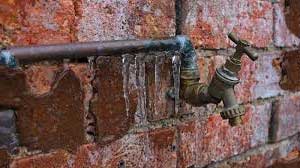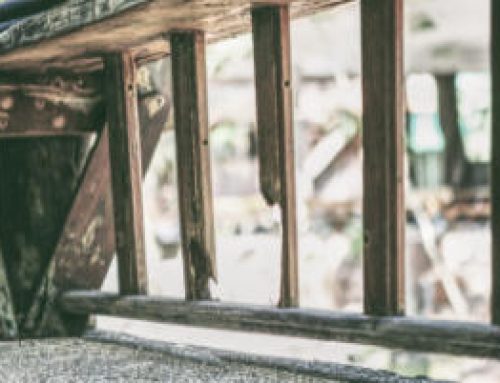The last thing you want to find when returning home from work, or getting up in the morning in freezing weather is that your faucets are frozen and no water flows out, or that water only comes out in a trickle. This can be the result of frozen water pipes. This is a potentially dangerous situation, and if you don’t take immediate action, the frozen pipes can damage your plumbing system. Let’s learn why pipes get frozen and how to prevent frozen water pipes in your future.
What Causes Frozen Water Pipes, and What Causes them to Burst?
If your water pipes are not properly insulated, they can become frozen when the water inside them freezes. Because water expands when it freezes, the pipes can potentially burst from the pressure—leading to costly repairs in your plumbing system and water damage to your home.
The problem occurs when the pipe becomes blocked by ice—sometimes in several places—and causes a buildup in water pressure. Upstream, the water is forced backwards. Downstream from the blockage, it becomes trapped between the blockage and the closed faucet. Since it has nowhere to go, the pipe can burst. Pipe joints and cracks—even hairline cracks—are the most susceptible areas.
Generally, temperatures below 20 degrees Fahrenheit offer the highest risk for freezing.
How to Thaw Frozen Water Pipes
The first thing you want to do is shut off the water supply to the pipes. Then grab your hair dryer or heating pad as a thawing device and gently warm the area from the faucet backwards to where the pipe is frozen, being careful not to overheat the area or burn yourself.
How to Turn Off your Water Supply in an Emergency
It’s vital to know the location of your home’s main water valve and how to shut off the water supply from entering your home. Make sure everyone in your family knows where it is and how to use it.
Typically, the water shut off valve is located on the interior of your home, near the perimeter where the water pipes enter the house. It may be located in a utility room, basement or closet. Note whether it is a ball valve or a gate valve. A ball valve is a straight handle running parallel to the pipe in the “open” position. Move it to a perpendicular position to shut it off; there is only one direction it will move. A gate valve is a round handle that must be turned several times clockwise to fully shut off the water supply.
Related: How to turn off water to your house.
How to Prevent Frozen Pipes
The best way to prevent your pipes from freezing is to insulate them. If they are located in an attic or crawl space or along an exterior wall, wrap them with a layer of insulation. For extra insulation, wrap them again with heat tape. Look around areas where seal leaks may occur near water pipes, such as telephone, cable or electrical wire openings. Caulk around your dryer vents and pipes. Turn off outside spigots and remove and drain hoses.
If the weather is expected to be especially cold:
- Let your faucets (both cold and hot) drip slightly both day and night.
- Turn the thermostat to a warmer temperature
- Open cabinet doors under sinks and along interior walls to allow warm air to circulate
The good news is that most homes are built to protect the water pipes, with them places in heated, interior locations.
Were Your Water Pipes Installed Incorrectly? Contact Först Consulting Group.
If you wonder whether your pipes are installed correctly, or if they are susceptible to freezing, contact Först Consulting Group. We’ll be glad to perform an inspection and supply you with written documentation with photographic evidence to support a case against your contractor or plumber. Let us be your homeowner advocate in the case of a construction defect in Northern Virginia, Maryland or Washington, DC.
For information about Först services, visit our website. And contact us with any questions. We’ll be glad to help.


